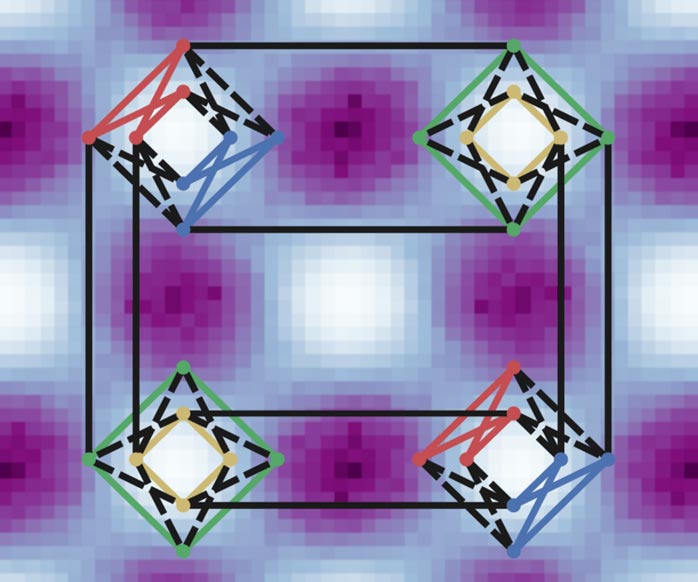

Researchers used a D-Wave quantum computer chip to create this simulation of a sample material with results comparable to those of real-world experiments.
Image courtesy of Paul Kairys
Multi-institutional team provides a foundation for unraveling the mysteries of magnetic materials.
The Science
Researchers have for the first time used a quantum computer to generate accurate results from materials science simulations that can be verified with practical techniques. The team used a form of quantum computing called quantum annealing. This approach uses quantum physics to simplify a computer model. The team overcame quantum hardware limitations by programming various parameters into a materials science model. Next, they embedded the model into team member D-Wave’s 2000Q quantum computer.
The Impact
The results from the simulation strongly resembled the output from real-world experiments. This demonstrates that quantum resources are capable of studying the magnetic structure and properties of magnetic materials. Eventually, such simulations on quantum computers could be more accurate and complex than simulations on classical digital computers. This would provide precise answers to materials science questions instead of approximations. It would also lead to a better understanding of spin liquids and spin ices. These are quantum states of matter that are potentially useful for data storage and other applications.
Summary
Using the largest quantum computer available at the time, researchers completed the largest simulation possible for the Ising model, a mathematical model of ferromagnetism. The research provides a foundation to streamline future efforts on next-generation quantum computers. Although quantum resources have previously simulated small molecules to examine chemical or material systems, studying massive magnetic materials containing thousands of atoms would not have been possible on a smaller system. By using a Monte Carlo simulation technique powered by the quantum evolution of the Ising model, the team gained valuable insights into the formation of a phenomenon known as fractional magnetization plateaus within materials called rare earth tetraborides in microscopic detail. This exotic phenomenon occurs in frustrated materials when an applied magnetic field, which normally causes all spins in a material to point in one direction, affects only some spins in the usual way while others point in the opposite direction instead.
Funding
This work was funded by the Department of Energy (DOE) Office of Science Early Career Research Program. Access to the D-Wave 2000Q system was provided through the Quantum Computing User Program managed by the Oak Ridge Leadership Computing Facility, a DOE Office of Science user facility located at Oak Ridge National Laboratory (ORNL). Research performed at ORNL’s Spallation Neutron Source, also a DOE Office of Science user facility located at ORNL, was supported by the DOE Office of Science. All the individuals and institutions involved with this research are members of the Quantum Science Center, a DOE Quantum Information Science Research Center established at ORNL in 2020.
DOI: https://doi.org/10.1103/PRXQuantum.1.020320
Method of Research: Computational simulation/modeling
Subject of Research: Not applicable
Article Title: Simulating the Shastry-Sutherland Ising Model Using Quantum Annealing
Article Publication Date: 14-Dec-2020
Media Contact
Michael Church
michael.church@science.doe.gov
Office: 505-358-1481












